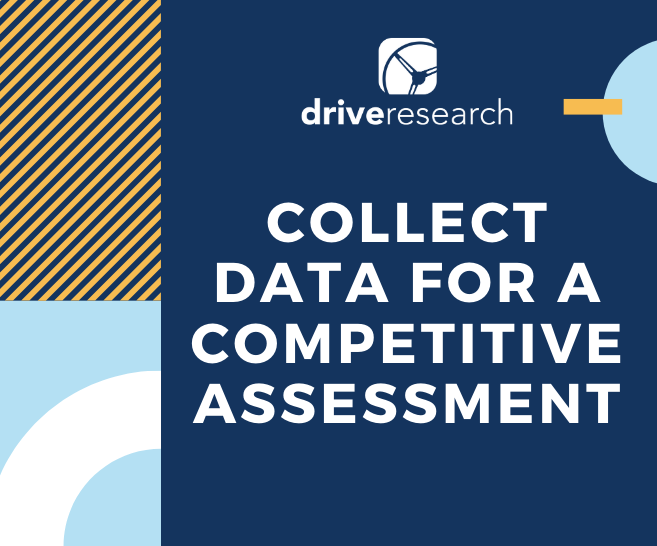Do you really know how well you stack up against your competitors? Do you really know or is it just a gut feeling? Market research challenges your "gut feelings" with competitive assessments.
The goal of a competitive assessment is to provide the information and data needed to fuel strategy. Perhaps customers perceive your brand to be more positive than some competitors or more negative than other competitors. Are you left wondering why? Market research answers these types of questions through various custom research methodologies and secondary data tools.
Learn 4 ways market research pros collect data for a competitive assessment below.

We've got a few data collection tricks up our sleeves.
How to Conduct an Online Survey for a Competitive Assessment
Wondering how you stack up against competitors from the minds of consumers? One way to tackle this question is to ask! Online surveys are a great option for competitive assessments since there is the ability to target specific geographies, types of people, etc.
Online surveys are a customizable research tool used for measuring, meaning that if you want to place numeric value on how well your brand is perceived compared to several competitors an online survey will answer that. There's also the ability to test other research objectives in online surveys. For example, perhaps you want to understand usage of marketing platforms used. Or, maybe you want demographic insight to help understand customers versus potential customers versus consumers.
Another pro to online surveys is that they can be completed quickly. At Drive Research, our team can complete a competitive assessment online survey project in as little as 2 weeks. Learn more about how long online surveys and other types of market research take to complete.
How to Search on Google for a Competitive Assessment
This is a simple one, but searching Google for information is a tried and true basic research method. In fact, we sometimes call ourselves professional Googlers. A more specific example of how Google is used in market research is compiling information about competitors.
For example, if a hotel is conducting a competitive assessment it would be valuable to understand the number of hotels within their market, number of rooms at each hotel, amenities provided at each hotel, location, nearby restaurants, and nearby entertainment.
This example just scratches the surface of the types of information stored on Google. Market research pros utilize several types of information when conducting a competitive assessment.
Leverage data from several sources when conducting a competitive assessment.
How to Use Census Data for a Competitive Assessment
Similar to Google, Census data is used by market researchers to learn more about the market, which is a key piece to a competitive assessment. The benefit of using Census data is the ability to understand where the market has been, where it currently is, and projections.
There is a ton of different types of information you can learn from Census data, but primarily demographic information. At Drive Research, our team uses a proprietary in-house data system available to our clients.
In previous posts, we discussed key statistics and data for Syracuse, Rochester, and Albany. Check out each of these posts to learn more about how census data can be used. This type of secondary research can be customized based on the needs of the competitive assessment.
How to Conduct IDIs for a Competitive Assessment
In-depth interviews (IDIs) are a qualitative market research method used to gather feedback from key stakeholders. The beauty of IDIs is that the conversation can reach deeper, more specific levels than what can be learned through an online survey, Google search, and Census data. Online surveys are powerful, but if the research goal is to understand in-depth feedback from a few specific contacts an IDI might be the right choice for your market research project.
An IDI discussion guide is customized for the based on the research objectives. The guide is precise in question language, order, etc. During the conversation, market researchers will ask strategic follow-up questions to ensure the right information is gathered. Once the IDI is complete, the researchers write a summary based on conversation keeping the interviewee anonymous. After all IDIs have been completed, a report will be created based on the findings.
Interested in learning more about stakeholder IDIs? We've got you covered.
Want more? Contact our team!
Drive Research is a national market research firm. Our team consults with clients to ensure market research is executed effectively and the data provided fuel current and future business and marketing strategies. Want to learn more about our team? Contact us!
Give us a ring by calling 315-303-2040.or email us at [email protected].
